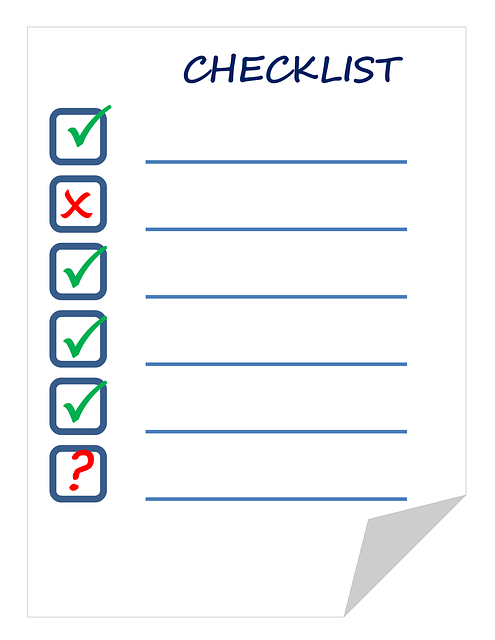 In many of my newsletters, I have talked about the importance of sharing information abundantly, building relationships of trust and interdependence, and helping people to see the importance of their own work in building the success of the whole organization.
In many of my newsletters, I have talked about the importance of sharing information abundantly, building relationships of trust and interdependence, and helping people to see the importance of their own work in building the success of the whole organization.
I have also talked about the importance of each person being centered, having the best available information, and help at the specific time when they have to make a decision and do their work. When they turn that wrench, press a switch, or open a valve, they need to be fully present to their work and have teammates who will help them to think through the immediate issues so that the likelihood of an injury, incident or fatality is very low.
This is really important:
In recently reading Atul Gawande’s book, “The CheckList Manifesto” (2009), which is a NY Times Best Seller, it occurred to me that there was something here that could be very useful for the people doing the work in our plants and factories.
Dr. Gawande is a fine surgeon who has a deep interest in improving the success of surgeries by eliminating the things that can easily go wrong and result in a serious injury or death to the patient. These wonderfully trained surgeons are working in a highly complex environment where things can be missed and mistakes made. In working in all sorts of operating rooms across the world, they:
- found that simple steps, like knowing each other on the operating team, the timing of giving the antibiotics and anesthesia or having a backup plan, were missed about 25% of the time and
- that by using checklists, mistakes dropped around 35% and deaths fell 47%.
These checklists are quick, simple tools to support highly-trained professionals and produce very significant improvements in safety at essentially no additional costs or time required. (Nothing complicated!)
When he looked at how airplane pilots used checklists in their highly complex situations, he found that they were used to avoid missing critical steps in the preparation of their aircraft before takeoff to ensure the safety of these highly trained professionals crews and passengers in both military aviation and the airline industry.
How Can the Use of Checklists Help Your Safety Performance?
In our plants and factories, it is critical that those doing the work are fully present mentally, physically and emotionally so that the safety of themselves, their work partners and others is maximized. Two places where simple checklists could be quite helpful are in shift start meetings and doing a “Take-Two” just before a maintenance job, a repair job or in trouble-shooting. These would be simple, carefully crafted, focused checklists that could be reviewed and used in a couple of minutes to make sure that everyone on that job is fully present and ready to do the work. These are to support and remind skilled people of several critical factors that could make the difference between a smooth, skillful, successful meeting or job and a disaster if something was missed in the hurry to get into the work.
|
These checklists are not the usual ones we see being used to be sure the equipment is checked out, rather they are checklists to be used to be sure that people have cleared their minds and are fully present mentally, emotionally and physically ready to do the work safely and well. |
Just before a shift start meeting or at the beginning of a maintenance or repair job, the leader could quickly skim the checklist to remind him/her of key issues facing the people on the shift and remember to talk about them together. As they talk together, they can check to see if everyone is physically, emotionally and mentally ready to work and develop a better understanding of the day’s challenges and tasks. They can ensure that the right equipment and PPE are available and will be used, that the right people will be involved, and that they have a backup plan if something goes wrong. They will see if they need to ask for help from other groups for the bigger or specialized tasks. There will also be reminders about not taking short cuts and stopping the job if it can’t be done safely.
The checklists can easily incorporate the sharing of information, building trust and interdependence and helping people to see the importance of their work while also focusing on the particulars of the immediate work. These would serve as tools to support the highly skilled people doing the work.
Since so many of our injuries and fatalities occur in driving accidents, a simple checklist could be used to help drivers to remember 3-4 key driving principles when they step into their vehicles before starting the equipment.
These checklists can be a very simple, easy way to significantly reduce incidents, injuries and fatalities.
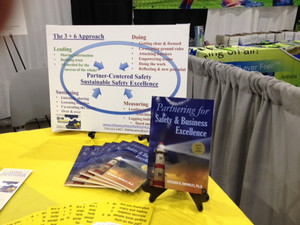 At our exhibit booth, Claire and I shared our Partner-Centered Leadership approach. We handed out brochures and other literature that can help organization’s achieve safety excellence and move towards their OSHA Star designation. We were there to share important information, including the need to be able to lift up and address one’s safety elephants that are preventing organizations from being the best they can be.
At our exhibit booth, Claire and I shared our Partner-Centered Leadership approach. We handed out brochures and other literature that can help organization’s achieve safety excellence and move towards their OSHA Star designation. We were there to share important information, including the need to be able to lift up and address one’s safety elephants that are preventing organizations from being the best they can be. The keys for addressing both of these concerns in building sustainability into their programs and in achieving the OSHA Star status is for the people at all levels and parts of the organization to talk together to get clear and aligned on just what they really want to do. How sincere and authentic is the desire to have safety excellence for the long-term? (This means Communication with a Capital C—requiring Co-creation, Clarity and Coherence.) In addition, together they must take the time to co-create a set of ground rules about how they agree to work together in order to achieve their safety goals and then hold each other accountable to live up to them. (That’s Partnership and Commitment!) The process to achieve this is available to you and your organizations now.
The keys for addressing both of these concerns in building sustainability into their programs and in achieving the OSHA Star status is for the people at all levels and parts of the organization to talk together to get clear and aligned on just what they really want to do. How sincere and authentic is the desire to have safety excellence for the long-term? (This means Communication with a Capital C—requiring Co-creation, Clarity and Coherence.) In addition, together they must take the time to co-create a set of ground rules about how they agree to work together in order to achieve their safety goals and then hold each other accountable to live up to them. (That’s Partnership and Commitment!) The process to achieve this is available to you and your organizations now. This is all about having everyone go home in one piece and having a profitable business. Excellence in both the safety performance and business results are attainable.
This is all about having everyone go home in one piece and having a profitable business. Excellence in both the safety performance and business results are attainable.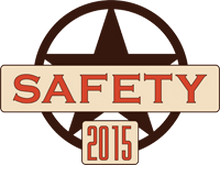 “
“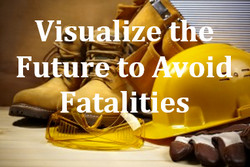 In my reading, studying and talking with many people, I have found that over half of the fatal accidents are often unanticipated and missed using our traditional approaches to accident prevention. The Heinrich Accident Triangle is very useful as we look at unsafe acts at the base of the triangle. Lots of slips, trips and falls are avoided as we do this.
In my reading, studying and talking with many people, I have found that over half of the fatal accidents are often unanticipated and missed using our traditional approaches to accident prevention. The Heinrich Accident Triangle is very useful as we look at unsafe acts at the base of the triangle. Lots of slips, trips and falls are avoided as we do this. Talking together is one of the most important things we can do to help to improve the safety in our workplaces. Letting people know that you care about them and respect them. But too many times I have seen supervisors and managers talking down to their employees ordering them to do this or that.
Talking together is one of the most important things we can do to help to improve the safety in our workplaces. Letting people know that you care about them and respect them. But too many times I have seen supervisors and managers talking down to their employees ordering them to do this or that. In reading the various, publicly-available reports, it looks as if all three of these big mistakes were probably made. The push for production was dominant, piping changes had been made without documentation, the safety procedures were modified or ignored, operating problems were not properly addressed and tolerated, previous practices allowed the draining of small quantities of material right into the room, and the communications were such that people probably could not or would not tell their management, who probably were not listening anyway, all the problems.
In reading the various, publicly-available reports, it looks as if all three of these big mistakes were probably made. The push for production was dominant, piping changes had been made without documentation, the safety procedures were modified or ignored, operating problems were not properly addressed and tolerated, previous practices allowed the draining of small quantities of material right into the room, and the communications were such that people probably could not or would not tell their management, who probably were not listening anyway, all the problems. At a recent safety conference I learned about a way to quickly assess whether a manufacturing site was cutting corners and trying to get by on less than the best. The person speaking, Ewan Alexander of BHP Billiton, said that he looked for improvised tools being used.
At a recent safety conference I learned about a way to quickly assess whether a manufacturing site was cutting corners and trying to get by on less than the best. The person speaking, Ewan Alexander of BHP Billiton, said that he looked for improvised tools being used. 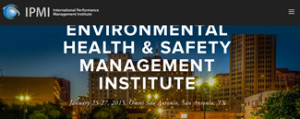 How important it is to stay on top of global strategic trends and innovations while aligning our efforts with business strategy.
How important it is to stay on top of global strategic trends and innovations while aligning our efforts with business strategy.  Each of us, as we travel to and from our work spaces want to be “safe and sound”—we want to return at the end of the day or at the end of our work-shift to our loved ones—safe and sound.
Each of us, as we travel to and from our work spaces want to be “safe and sound”—we want to return at the end of the day or at the end of our work-shift to our loved ones—safe and sound.  There are three main aspects to Partner-Centered Safety.
There are three main aspects to Partner-Centered Safety.




